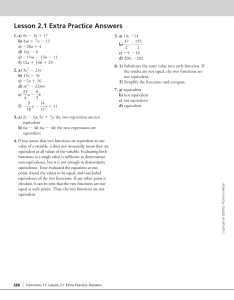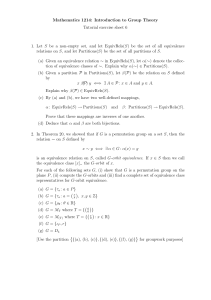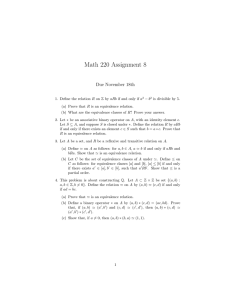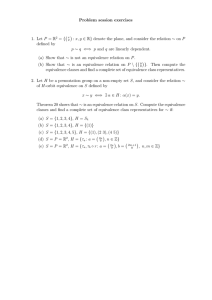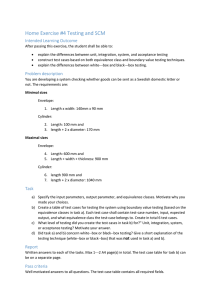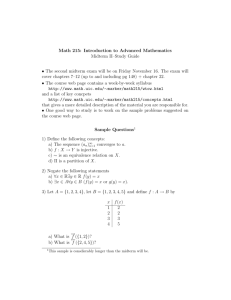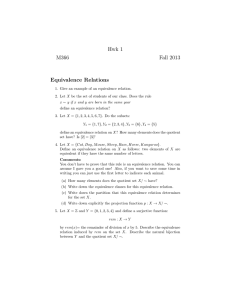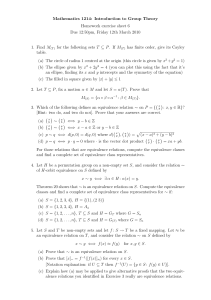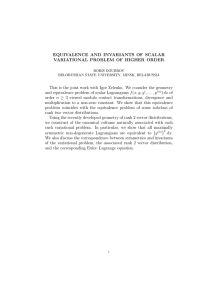Equivalence Relations and Partitions
advertisement
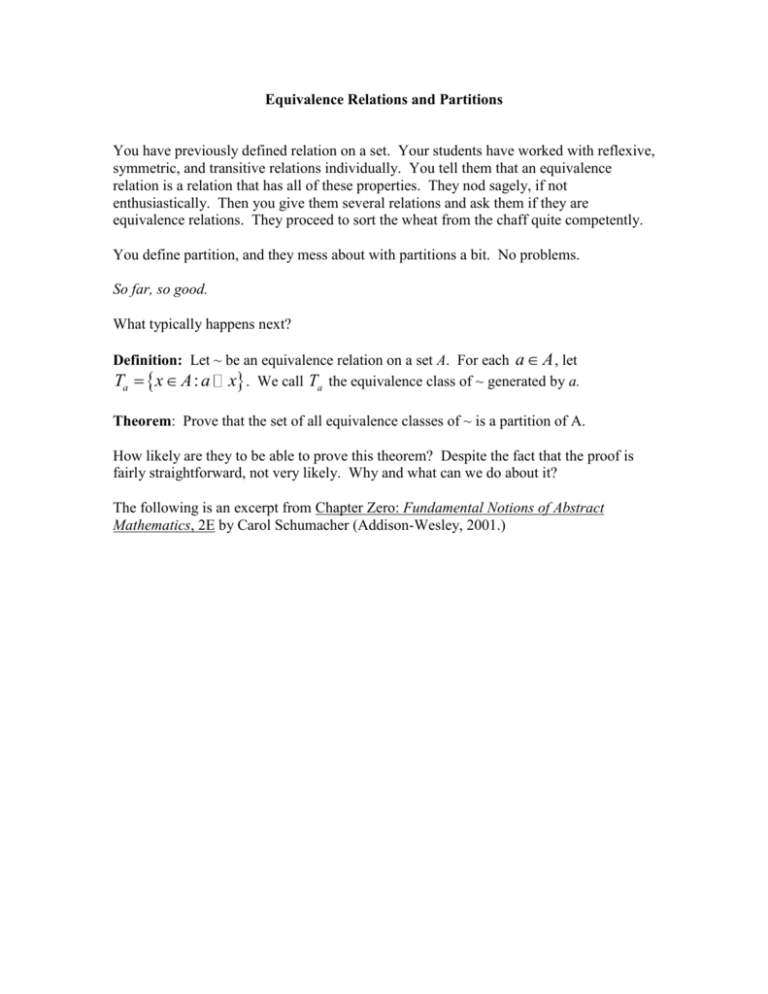
Equivalence Relations and Partitions You have previously defined relation on a set. Your students have worked with reflexive, symmetric, and transitive relations individually. You tell them that an equivalence relation is a relation that has all of these properties. They nod sagely, if not enthusiastically. Then you give them several relations and ask them if they are equivalence relations. They proceed to sort the wheat from the chaff quite competently. You define partition, and they mess about with partitions a bit. No problems. So far, so good. What typically happens next? Definition: Let ~ be an equivalence relation on a set A. For each a A , let Ta x A : a x . We call Ta the equivalence class of ~ generated by a. Theorem: Prove that the set of all equivalence classes of ~ is a partition of A. How likely are they to be able to prove this theorem? Despite the fact that the proof is fairly straightforward, not very likely. Why and what can we do about it? The following is an excerpt from Chapter Zero: Fundamental Notions of Abstract Mathematics, 2E by Carol Schumacher (Addison-Wesley, 2001.)
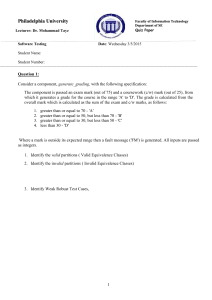

![MA1124 Assignment3 [due Monday 2 February, 2015]](http://s2.studylib.net/store/data/010730345_1-77978f6f6a108f3caa941354ea8099bb-300x300.png)
